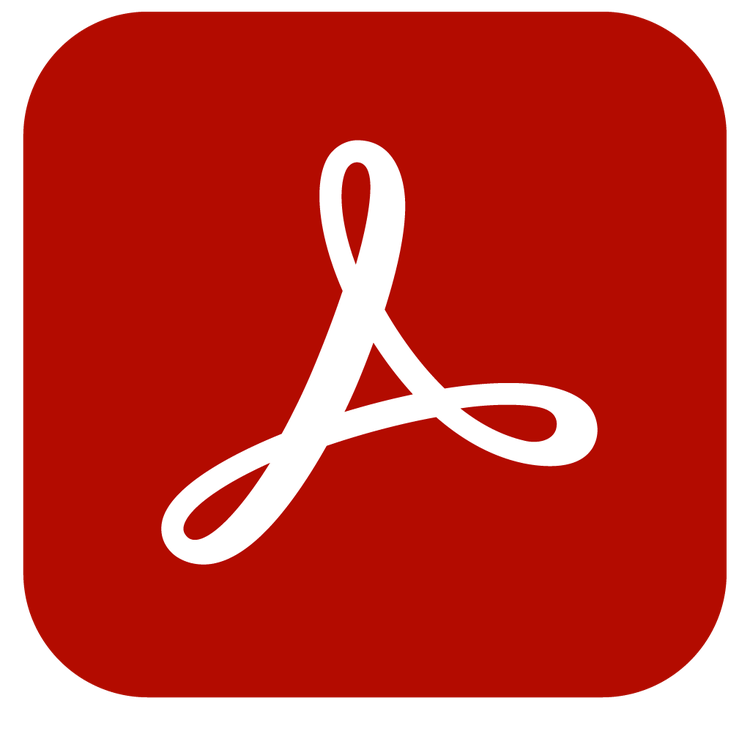Adobe Acrobat
How to request a transcript from your high school, college, or graduate school.
Graduating gives you a lot more than just a warm feeling of accomplishment. Documents like transcripts and diplomas memorialize what you did and what you learned.

Digital signatures make it a breeze to request documents like transcripts.
To get your hands on copies of diplomas or transcripts, you’ll need to fill out paperwork. If your college allows the use of digital documents and e-signatures, you can fill out any requests that require signature without printing them out — so you can get your documents more quickly.
Get the documents you need to prove you’ve finished school.
Finishing high school, college, or a graduate program is a major accomplishment. Having any kind of degree opens doors and unlocks opportunities. Completing school means you qualify for additional higher education, better jobs, and new experiences, and at various points in your life, you’ll have to demonstrate to others that you did, in fact, do the work.
Sometimes you’ll show off a diploma on your wall, sometimes you’ll tell a future employer about your degree, and sometimes you’ll have to furnish someone with a transcript. Fortunately, requesting a transcript is straightforward, and you can get that information fast when you learn how to electronically sign a PDF or transcript request.

What’s on a transcript?
If you’re applying for a job or graduate program or writing a grant proposal, you might have to provide a transcript from your high school, college, or other academic program.
A transcript is a list of classes that a student has taken and grades they have earned in those classes. Grades are usually given a numeric score from zero to four. Four is an A, three is a B, and so on. Grades are averaged together into a single number known as the grade point average, or GPA. A GPA of 4.0 is straight As. Anything above 3.0 is usually considered good. Transcripts are among the most important of all your academic records. They verify enrollment in and completion of a given course of study, and provide a quick snapshot of how you did in school.
There are two kinds of transcripts. An unofficial transcript is whatever information an institution has online via its student records portal. An official transcript, though, has the signature (usually a stylized handwritten signature) of the registrar, and it’s what third parties are looking for when they want to see your transcript.
How to request a transcript.
High schools, colleges, and universities get requests for official transcripts all the time and have processes to provide them to students, former students, or third parties. Transcript ordering is a routine activity for most student or alumni-relations offices, and you can almost always request a transcript online. There’s usually a fee of some sort.
- If you’re a current student, you can get a guidance counselor or similar staff member to provide you, or another party, with a transcript quite quickly.
- If you’re not a current student, getting a transcript is also fairly simple. Most of the time, you can go to a school system or higher education institution’s website and find a section specifically for alumni or former students that will have a transcript request form.
- Input your name or old student ID number and follow a few other simple steps, and your transcript will be on the way in a few business days.
A transcript is the most granular and detailed document you get when completing school. But it’s not the only one. Graduates also receive a diploma.

What it means to have a diploma.
A diploma is different from a transcript. Transcripts are used to show how you did in school, and it’s what third parties will use to evaluate you when they’re considering you for entrance to future academic programs or employment. A diploma, however, is a ceremonial document that commemorates a student completing a round of studies. It’s like a trophy, but for school.
A diploma is a physical document that you can put on your wall or bookshelf. It symbolizes academic achievement. Diplomas are also called “sheepskins” or “parchments” because of what they were traditionally made out of, but nowadays nearly all diplomas are made of paper. Your office or trophy case is a proper home for a diploma, and almost no one will ask to see it as proof of schooling.
Diplomas are either handed out at graduation ceremonies or mailed to students afterward. You don’t use a diploma to certify your studies. If an employer or other third party wants to verify your education, they’ll usually ask for a transcript.
Diploma sometimes refers to a person’s level of education. If someone “has a high school diploma,” that means they’ve graduated from high school. However, you wouldn’t say that someone has “a college diploma.” Usually you’d say they have “a degree from the University of Oregon,” or whatever their alma mater is.
What it means to have a degree.
A degree is the academic achievement itself. When we say that someone “has a degree” in a field, the degree isn’t a physical thing. It’s their knowledge, experience, and expertise related to that field of study. A diploma, like any physical object, can be lost or destroyed. A degree can’t.
As long as a degree holder lives, they “have” a degree in a field of study, and nothing can take that away from them. A degree, for the most part, exists as part of your lived experience. A diploma or transcript is how you prove you have a degree.
Get transcripts and other documents fast with electronic signatures.
Whether you’re requesting traditional paper transcripts or electronic ones, some colleges offer the option of using electronic signatures. Thanks to digital signatures, what used to take several days or even weeks, now takes mere hours. With the option to do things electronically, you can get out into the world faster, equipped with knowledge and the proof of what you’ve accomplished.
